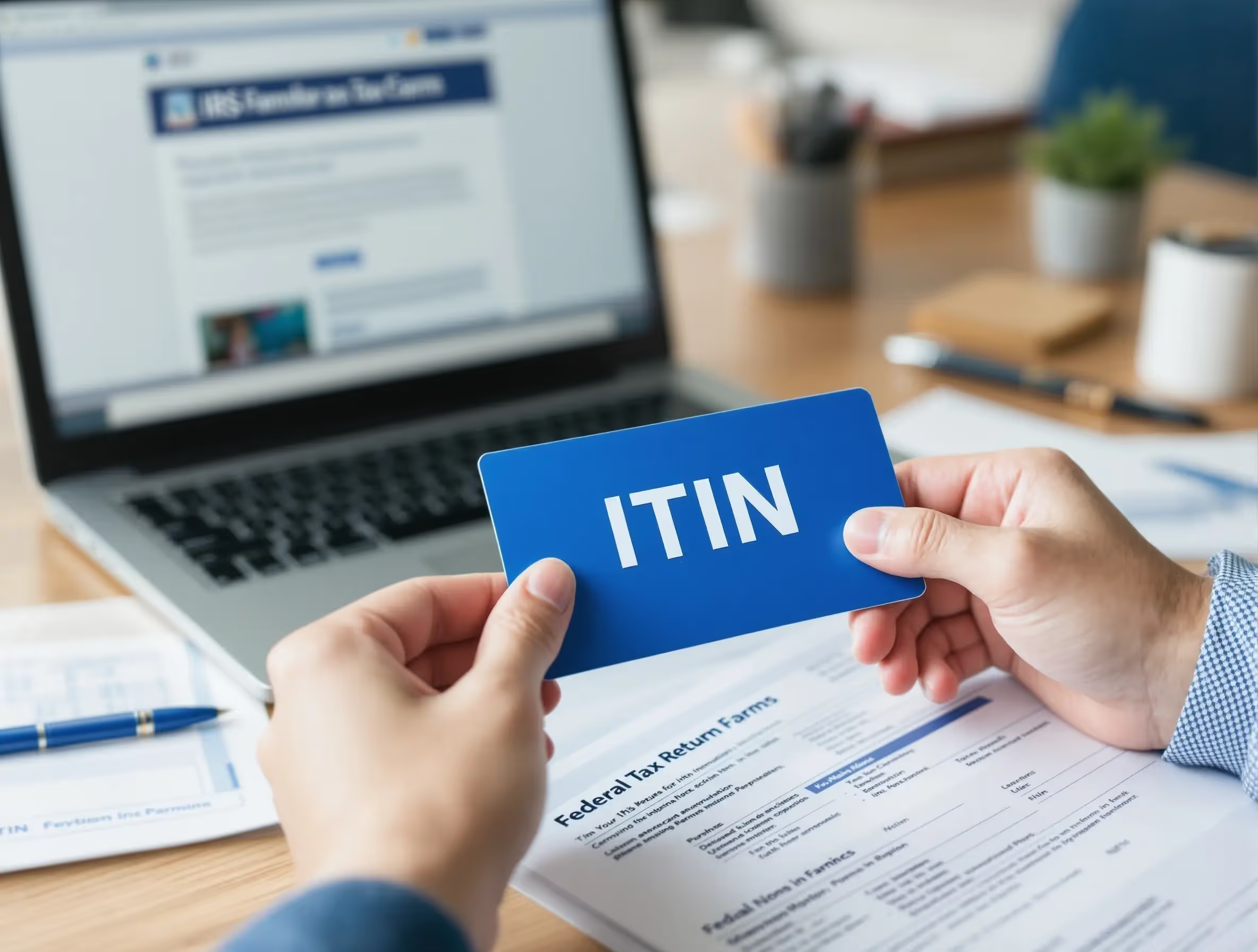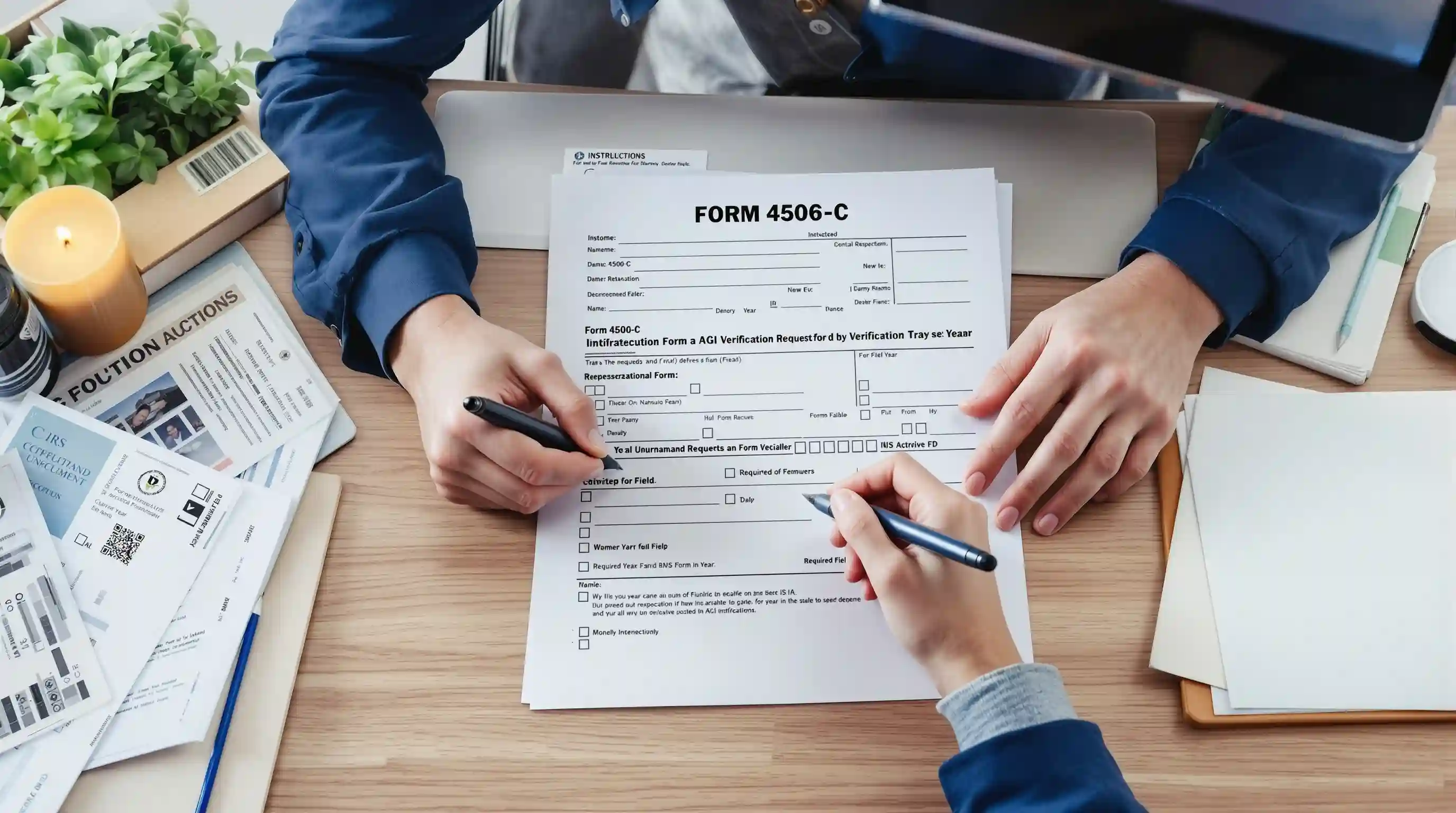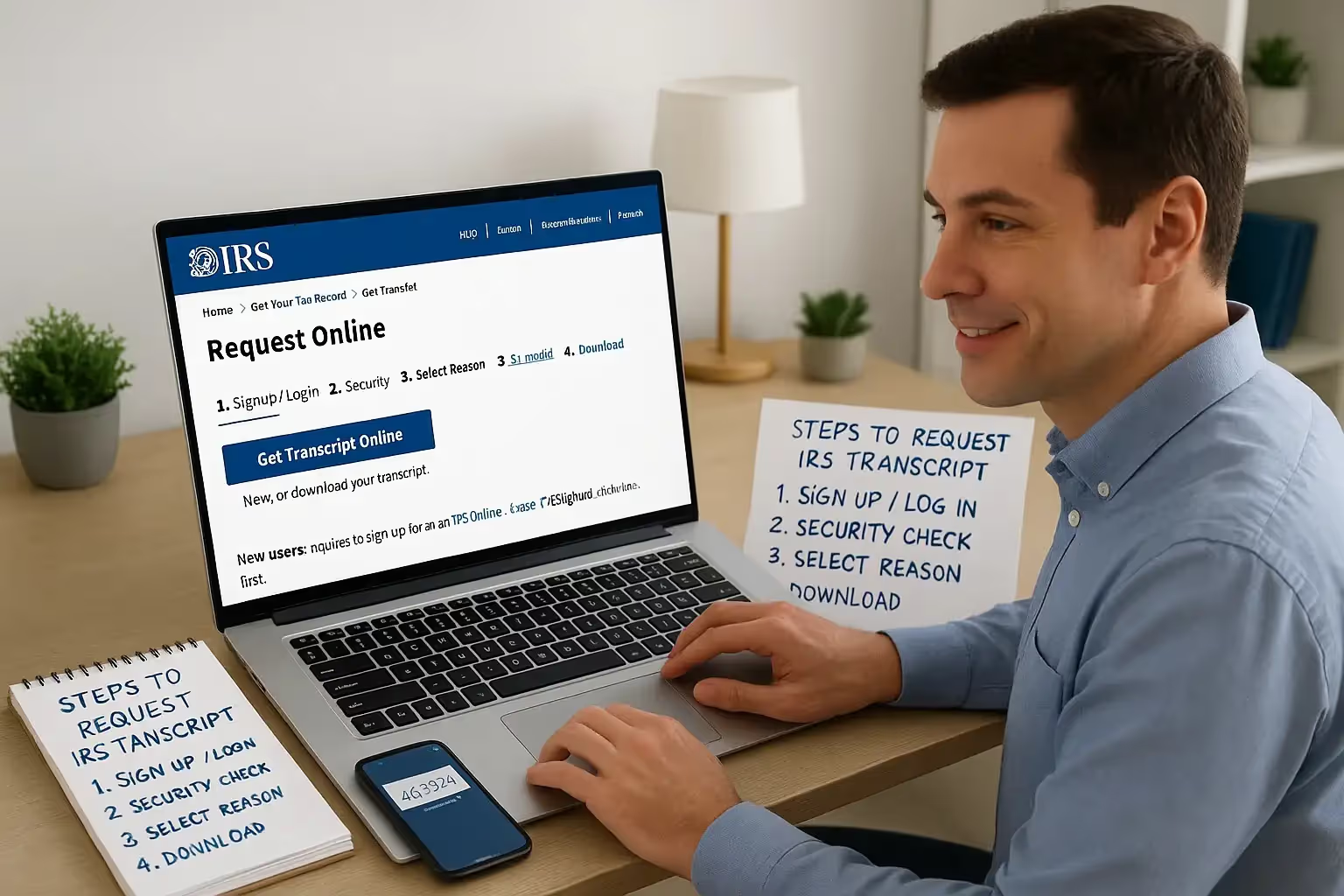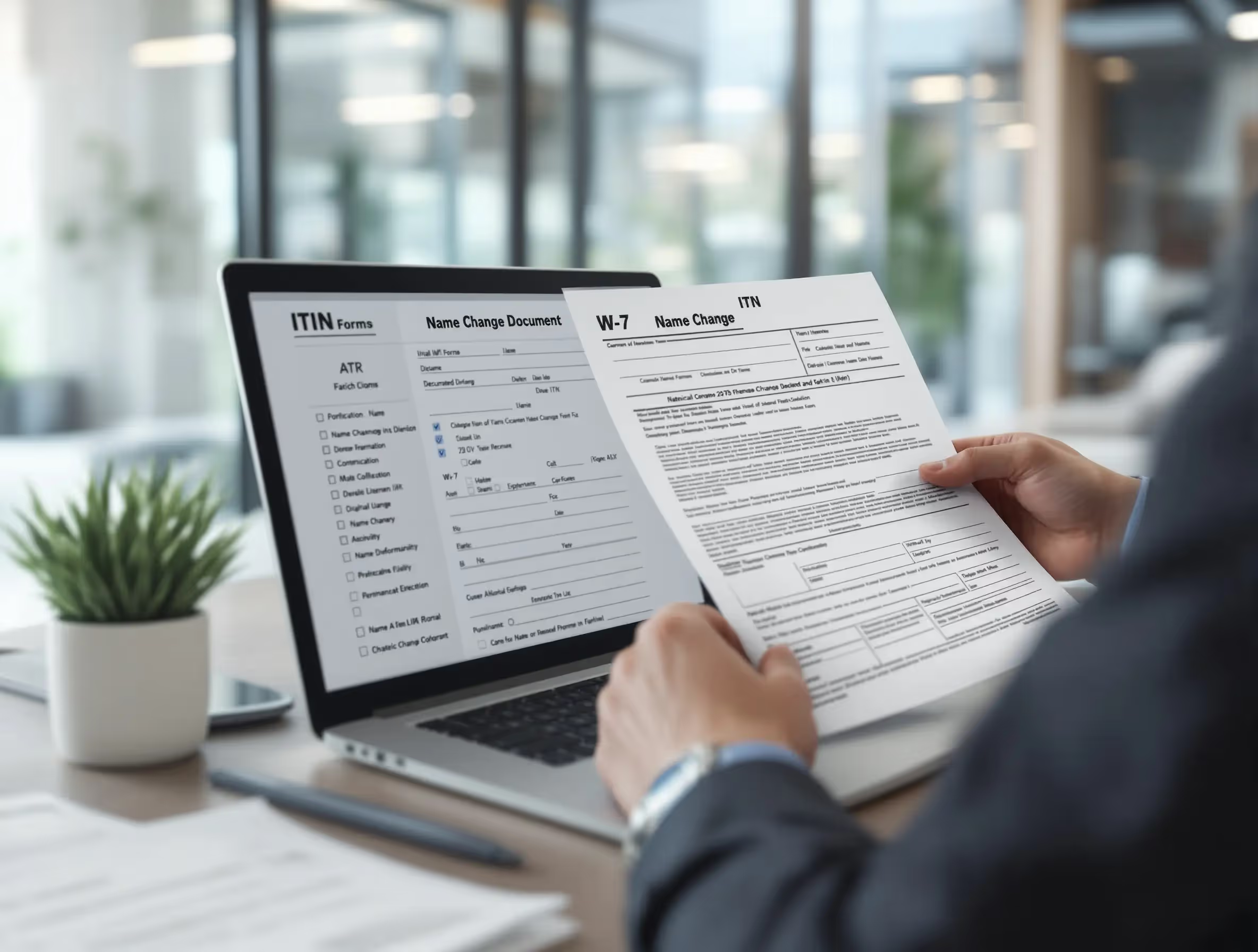
The Federal Unemployment Tax Act (FUTA) helps fund unemployment compensation programs for workers who lose jobs. Employers must file Form 940 annually, officially known as the Employer's Annual FUTA Tax Return, with the Internal Revenue Service (IRS) to report these taxes. For many businesses, maintaining accurate records goes beyond simply filing taxes. It often requires obtaining official IRS documents, known as the employer's annual FUTA Form 940 transcripts, to confirm filing history and meet compliance requirements.
These transcripts serve as essential proof for multiple purposes. Financial institutions may request them when reviewing business loan applications. Auditors might require them during compliance checks, and tax professionals often rely on them to verify information for prior years or correct discrepancies. Whether accessed online or requested by mail, Form 940 transcripts give businesses a secure way to review key tax return details without exposing sensitive financial information.
This guide covers Form 940 transcripts, their types, availability, and how to request them from the IRS. We will also cover common mistakes to avoid, practical use cases, and best practices for managing these documents efficiently. By the end, you will have a transparent process for requesting, reviewing, and using your transcripts for tax compliance and business needs.
What Is Form 940, and Why Does It Matter
Form 940, officially called the Employer's Annual FUTA Tax Return, is the document employers use to report their FUTA tax obligations to the Internal Revenue Service (IRS) annually. The FUTA tax provides funding for unemployment benefits for workers who have lost their jobs. Employers must file this tax return annually to comply with federal tax requirements.
Purpose of Form 940
The primary purpose of Form 940 is to ensure that employers pay their share of unemployment taxes on time and in full. These payments help maintain the federal unemployment insurance system, which supports workers during job losses.
- Funding unemployment programs
FUTA tax funds combine with state unemployment contributions to benefit unemployed workers.
- Maintaining compliance
Filing on time keeps employers in good standing with the IRS and prevents penalties.
- Providing proof of financial needs
Businesses may need Form 940 transcripts when applying for loans or during financial reviews.
For complete filing details, the IRS provides official instructions for Form 940 to help employers prepare and file correctly.
Key Filing Requirements
Employers filing Form 940 must meet specific IRS deadlines and follow reporting rules carefully:
- Annual filing: The due date for filing Form 940 is January 31 each year for the previous tax year. Employers who deposit all FUTA taxes on time may have until February 10.
- FUTA tax rate: The standard rate is 6.0% on the first $7,000 in wages per employee. Employers may qualify for a credit reduction if their state meets specific federal requirements, lowering the effective tax rate.
- Employer-only tax: FUTA tax cannot be withheld from employee wages. Only the employer is responsible for payment.
- Reporting wages accurately: Employers must report total wages subject to FUTA tax correctly to avoid IRS penalties or errors on their tax return.
Who Needs to File Form 940
Not every business is required to file Form 940, but most with employees do. Employers generally must file if:
- They paid $1,500 or more in wages during any calendar quarter of the current or prior year.
- They had at least one employee working any part of a day for 20 or more weeks.
Businesses meeting these criteria must file Form 940 and pay any owed FUTA tax to stay compliant with federal requirements.
Why Transcripts Are Important
Employer's Annual FUTA Form 940 transcripts prove that businesses filed their returns properly and met all tax obligations. Lenders, auditors, and government agencies often require these transcripts when verifying compliance. They also help companies to confirm IRS records, address discrepancies, or review prior years when preparing for audits or financial reviews.
Understanding IRS Transcripts
Obtaining tax information from the IRS in a way that protects sensitive data is essential for businesses. An IRS transcript summarizes key tax return details without exposing complete personal or business financial records, making it secure and practical for companies seeking documentation.
- Tax return transcript
This shows most line items from the original filed return, such as wages, income, and tax liability. It will not include IRS adjustments made after processing, ensuring clean filed data verification.
- Key security benefit
Transcripts mask sensitive information, such as most of the taxpayer’s Social Security number, replacing it with asterisks. Sharing these documents with third parties helps protect financial information and taxpayer identity.
- Typical uses
IRS transcripts are frequently used by financial institutions during loan reviews, by compliance officers and tax professionals for audits, and during due diligence in business transactions. They are also helpful for reviewing prior years' filings, verifying reported wages, or confirming payments and balances with IRS records.
For businesses requesting transcripts by mail, the IRS provides up-to-date mailing addresses for Form 4506‑T based on the state where the filing occurred. You can find the current addresses on the official IRS site for filing Form 4506‑T
Types of Form 940 Transcripts
When you request an employer's annual FUTA Form 940 transcripts, knowing which type suits your needs is essential. Below is a comparison that clarifies what each transcript includes and when to use it:
IRS Transcript Types and Their Best Uses
1. Tax Return Transcript
- What It Contains: Displays most line items from the filed tax return, including wages, payments, and FUTA tax. It does not include IRS adjustments or account activity.
- Best Use Case: Useful for loan applications or when you need basic proof of filing.
2. Tax Account Transcript
- What It Contains: Includes payment history, penalties assessed, interest, filing, and processing dates. It does not include detailed return information.
- Best Use Case: Best for account reconciliation or verifying payments and penalties.
3. Record of Account Transcript
- What It Contains: Combines both tax return and account activity into one document. Includes adjustments, payments, and original filing details.
- Best Use Case: Ideal for audits or comprehensive compliance reviews.
4. Entity Transcript
- What It Contains: Verifies business information in IRS records, including EIN, business name, entity type, and tax-exempt status.
- Best Use Case: Useful for business verification, EIN confirmation, or due diligence checks.
Why Knowing the Differences Matters
- Choosing the wrong transcript type can delay IRS processes, audits, or loan applications.
- Matching the transcript to your request purpose ensures accurate, efficient documentation.
- Each transcript serves different taxpayer needs, whether you’re filing, verifying, or reviewing records.
For official guidance on Form 940 and related instructions, refer to the IRS page about Form 940.
When Form 940 Transcripts Become Available
Knowing when employers' annual FUTA Form 940 transcripts are available can prevent delays during loan applications, IRS audits, or compliance checks. Availability depends on both how and when the original tax return was filed.
Filing Method Differences
The time before transcripts become accessible varies significantly based on the filing method:
- Electronic filing (e-file): Transcripts usually become available two to three weeks after the IRS confirms receipt. This faster turnaround helps businesses meet tight deadlines for lenders or auditors.
- Paper filing: Returns sent by mail typically take six to eight weeks before transcripts appear in the IRS system. Manual processing and mailing times account for the delay, making this option less efficient for time-sensitive needs.
Choosing e-file over paper filing often reduces processing times and minimizes administrative complications.
Typical Processing Timelines
Planning requests around IRS processing windows helps avoid premature transcript requests:
- Standard processing: Two to three weeks for e-filed returns and six to eight weeks for paper submissions. Requesting transcripts too early may result in incomplete or unavailable records.
- Peak filing season: Heavy IRS workloads can extend processing times by several weeks from January through April. Businesses should account for this when preparing loan applications or audit responses.
- Prior years: Transcripts for older tax years often require additional handling and may not appear in the online system. In such cases, mail requests or direct IRS contact might be necessary.
Understanding “No Record of Return Filed”
A “No record of return filed” response does not always indicate a problem with the tax return. It typically arises when:
- The IRS is still processing the return and is unavailable in transcript form.
- The return was filed using an incorrect Employer Identification Number (EIN), causing a record mismatch.
- The IRS has not yet updated its transcript database, especially during peak processing times.
Employers should verify the filing date, confirm EIN accuracy, and allow extra time before contacting the IRS for assistance.
How to Request Form 940 Transcripts
The Internal Revenue Service (IRS) allows businesses to request employers' annual FUTA Form 940 transcripts using three primary methods: online, by mail, or by phone. Each technique serves different needs, and understanding the process helps avoid delays and errors.
1. Access the IRS Business Tax Account online.
Online is the fastest and most secure method because businesses can access transcripts immediately after verification.
Eligibility Requirements
Before using the IRS Business Tax Account system, businesses must meet these conditions:
- For security purposes, the business must have an active IRS Business Tax Account with established login credentials.
- The person requesting access must be an authorized representative, such as the owner, a corporate officer, or another official with documented authority.
- The business must have its Employer Identification Number (EIN) and recent tax return information for identity verification during login.
Step-by-Step Process
- Log in to the IRS Business Tax Account using secure credentials to ensure proper identity verification.
- Access the “Tax Records” section within the account dashboard to view transcript options.
- Choose “Form 940” and the correct tax year so the system retrieves the specific records you need.
- Select the transcript type that matches your purpose, such as a tax return, tax account, record of accounts, or entity transcript.
- Download the transcript as a PDF file for storage, printing, or sharing with auditors, lenders, or compliance officers.
Advantages of Online Access
- Transcripts are available immediately, eliminating the need for mail delivery or processing delays.
- All transcript types can be accessed in one secure location, making recordkeeping more efficient.
- Digital files allow easy sharing with financial institutions or authorized third parties during audits, loan applications, or compliance reviews.
2. By Mail Using Form 4506-T
The mail-based option is helpful for businesses without online access or when physical documentation is preferred. Form 4506-T, Request for Transcript of Tax Return, is required for this method.
Steps to Complete Form 4506-T
- Obtain Form 4506-T from the IRS website or by calling the IRS directly to request a mailed copy.
- Enter the business name and EIN exactly as shown on the original tax return to prevent delays caused by mismatched records.
- List “Form 940” as the tax form and specify the tax year for which the transcript is needed to ensure correct processing.
- Mark the box for the appropriate transcript type, such as tax return transcript or record of account transcript, based on the business purpose.
- Sign and date the form using the authorized representative’s name and title so the IRS can verify the authority to request the record.
- To avoid routing errors, mail the completed form to the correct IRS address for your state, as listed in the official IRS instructions.
Processing Timelines for Mail Requests
- Standard processing generally takes seven to ten business days after the IRS receives the request.
- Because of increased demand during peak filing periods, such as January through April, processing may take up to fifteen business days.
- If the form is incomplete, missing a signature, or contains incorrect information, processing may be delayed by another week or longer.
3. By Phone Through the IRS Business and Specialty Tax Line
Businesses can also request transcripts by calling the IRS Business and Specialty Tax Line when mailing forms is inconvenient or online access is unavailable.
Phone Request Process
- To speak with an IRS representative, call 800-829-4933 during business hours (Monday through Friday, 7 a.m. to 7 p.m. local time).
- To verify identity before releasing the records, we must ensure the business name, EIN, and mailing address match exactly as they appear on IRS records.
- Specify Form 940, the tax year, and the transcript type needed so the representative can process the correct request.
- Confirm delivery details with the IRS representative to ensure the transcript is sent to the correct business address on record.
Limitations of Phone Requests
- Only basic transcript types, such as tax return transcripts, may be available through phone requests.
- Delivery times typically match mail requests, taking seven to ten business days for transcripts to arrive by post.
- Additional identity verification steps may be required for security reasons, which can extend the processing timeline.
Third-Party Authorization for Transcript Requests
Businesses often rely on accountants, tax professionals, or attorneys to manage interactions with the Internal Revenue Service (IRS). Proper authorization is required before the IRS can share an employer's annual FUTA Form 940 transcripts or tax records with anyone other than the business owner or authorized officer. Two IRS forms, Form 8821 and Form 2848, facilitate this possibility.
Form 8821: Tax Information Authorization
Form 8821 allows a third party to view and receive tax information for specified tax years and forms but does not permit them to represent the business before the IRS. It is typically used for information-sharing purposes only.
When to Use Form 8821
- A lender needs official Form 940 transcripts to verify tax compliance before approving a business loan.
- A compliance review consultant requires access to multiple years of financial information without needing to communicate directly with the IRS.
- An accountant must review prior years’ returns or payment records to prepare tax filings or address discrepancies.
Steps to Complete Form 8821
- Acquire Form 8821 from the IRS website or by contacting the IRS to ensure you have the latest version.
- Ensure that the business name, EIN, and address are entered exactly as they appear on the original tax return to ensure IRS records match accurately.
- List “Form 940” and the specific tax years the authorization covers so the IRS releases the correct transcripts.
- Provide the full name, address, and contact information of the third party who will be granted access to the tax information.
- Sign and date the form as the business owner or authorized officer to make the authorization legally valid.
- Submit the completed form to the IRS electronically or by mail, following the instructions provided with Form 8821.
Important Limitations
- Form 8821 grants view-only access to tax information; it does not permit the representative to speak or act for the business.
- Authorizations may be restricted to specific tax forms or years, giving the business control over the amount of access granted.
- The authorization remains valid until revoked or until it expires on the date specified on the form.
Form 2848: Power of Attorney and Declaration of Representative
Form 2848 goes beyond information access by allowing a third party to represent the business before the IRS. This includes handling IRS communications, attending meetings, and resolving issues directly with the agency.
When to Use Form 2848
- A business is undergoing an IRS audit involving FUTA tax liabilities and needs an attorney or enrolled agent to act on its behalf.
- A tax professional must receive IRS notices and respond directly to inquiries concerning Form 940 transcripts or related payroll tax matters.
- The business wants a representative to negotiate penalties, compliance disputes, or payment arrangements with the IRS.
Steps to Complete Form 2848
- Download the latest Form 2848 from the IRS website or request a copy by phone to ensure compliance with current rules.
- Enter the business name, EIN, and address exactly as they appear on IRS records to prevent processing delays.
- List “Form 940” and all applicable tax years for which the representative can act.
- Identify the representative by full name, address, and CAF number (if available) so the IRS can verify credentials and contact details.
- Sign and date the form as a business owner or authorized officer to grant official power of attorney.
- Submit the completed form electronically through IRS systems or by mail, following the instructions for Form 2848.
Key Benefits
- Representatives can receive IRS correspondence, attend meetings, and submit documentation directly on behalf of the business.
- Multiple representatives can be listed on the same form, providing flexibility for businesses working with a legal team or accounting firm.
- Authorizations remain in effect until they are revoked by the business or expire based on the date specified on the form.
Common Mistakes and How to Avoid Them
When businesses request annual FUTA Form 940 transcripts, common errors can delay processing or result in incomplete records. Using the correct form, confirming details, and following IRS rules can prevent these issues.
Requesting the Wrong Transcript
Many businesses request a tax return transcript when they need a tax account or record of account transcript for complete payment and filing details.
- How to avoid it: Confirm the purpose before requesting. For example, a tax return transcript works for basic loan checks, while a record of account transcript is best for audits.
Incorrect FUTA Information
Errors like wrong EINs, tax years, or missing signatures often cause rejections or delays.
- How to avoid it: Check that Form 4506-T matches IRS records exactly and includes the correct year before submitting.
Ignoring Credit Reduction Rules
Some businesses overlook credit reduction states, leading to different transcript amounts from original filings.
- How to avoid it: Review IRS credit reduction guidelines for the correct year to confirm whether extra FUTA taxes apply.
Incomplete Prior Year Requests
Missing tax years or incomplete forms delay processing for older records.
- How to avoid it: Ensure all required years are clearly listed on Form 4506-T, and verify if older records require special IRS handling.
Timing Errors After Filing
Requesting transcripts right after the due date can trigger a “No record of return filed” message because the IRS has not processed the return yet.
- How to avoid it: Wait two to three weeks for e-filed returns or six to eight weeks for paper returns before requesting.
Practical Use Cases for Form 940 Transcripts
Businesses rely on employers' annual FUTA Form 940 transcripts for more than recordkeeping. These documents serve multiple purposes in lending, compliance, and financial reporting. Below are real-world scenarios where transcripts become essential and practical notes on what to expect.
- Loan Applications and Financial Reviews
Lenders often require IRS transcripts to verify tax compliance before approving loans or credit lines. Businesses can download transcripts instantly through the IRS Business Tax Account instead of waiting for mail delivery. Confirm whether lenders accept digital files or require original IRS copies before submitting documents. - IRS Audits and Compliance Checks
During audits, transcripts verify payment history, wages, and filing accuracy. Keeping detailed records and comparing them with IRS data can prevent errors and speed resolution if discrepancies arise. - Refund Verification and Payment Discrepancies
Transcripts confirm whether refunds or payments have been processed correctly. Monitoring them regularly helps businesses anticipate timelines and resolve delays quickly. - Acquisitions, Mergers, and Due Diligence
Buyers use transcripts to check employment tax compliance before completing acquisitions. Reviewing several years of records helps identify unpaid taxes, late filings, or reporting issues. Notes attached to transcripts clarify their purpose for legal or financial teams.
Troubleshooting Transcript Request Issues
Even with careful tax preparation, businesses sometimes face problems when requesting an employer's annual FUTA Form 940 transcripts. Knowing the issues and solutions helps prevent delays.
“No Record of Return Filed” Messages
This often appears when the IRS has not processed the return, or the wrong EIN was used. Verify the EIN and tax year, and allow processing time before requesting transcripts. If the problem persists, call the IRS Business and Specialty Tax Line listed on the transcript instructions page.
Incorrect or Missing Transcript Information
Transcripts may show missing wage data or inaccurate payments. Compare records carefully, note discrepancies, and check the IRS site for the locked padlock icon before submitting corrections securely online.
Processing Delays During Peak Periods
Transcript requests between January and April often take longer because this period covers the primary tax filing season. Businesses should plan, request transcripts early, and check the IRS page for the most recent review or update dates to confirm the current processing timelines.
Authorization Problems with Third Parties
Requests through accountants or attorneys fail when authorizations expire or lack signatures. Confirm the details of Form 8821 or Form 2848 before submitting. Each form’s IRS instructions page explains requirements clearly.
Best Practices for Transcript Management
Managing an employer's annual FUTA Form 940 transcripts effectively helps businesses stay organized and ready for audits, loans, or compliance checks. Start by scheduling transcript filling at the same time each year to avoid last-minute requests. Create labeled folders—digital or physical—for each tax year, including transcripts, authorization forms, and related correspondence, so records are easy to identify.
Review transcripts regularly to ensure IRS information matches internal payroll and tax payment data. Detecting errors early prevents delays with lenders or auditors. If accountants or attorneys request transcripts on your behalf, keep Form 8821 or Form 2848 current to maintain access.
Finally, add transcript reviews and authorization updates to your compliance calendar. This simple practice keeps records accurate, prevents processing delays, and ensures businesses can respond quickly to financial or regulatory requests.
Frequently Asked Questions (FAQs)
How far back can I request Form 940 transcripts?
Form 940 transcripts are available online for the most recent tax years. For older records, including prior years, you may need to file Form 4506-T by mail. Some older records may require special handling by the IRS, so confirm availability before submitting your request to avoid delays.
What’s the difference between a tax return and a tax account transcript?
A tax return transcript shows most original line items from your Form 940 filing, but excludes account activity. A tax account transcript includes payments, penalties, and balance information, but not the detailed return. Businesses needing both details often request a record of account transcript, combining return information and account history into a comprehensive document for accuracy.
Can I request transcripts for a closed business?
With proper authorization, you can request transcripts for closed businesses, and IRS records remain available. Closed business transcripts often require submitting Form 4506-T by mail rather than using online services. To avoid processing delays or request rejections, you must include documentation proving your authority to act for the business, such as ownership records or legal authorizations.
Do I need to pay to request Form 940 transcripts?
Most Form 940 transcripts are free of charge through the IRS Business Tax Account online or by mailing Form 4506-T. Certified copies of original tax returns requested using Form 4506 may require a fee. Because transcripts usually meet lenders’ or auditors’ requirements, businesses rarely need certified copies unless requested explicitly by financial or legal institutions reviewing records.
Will requesting a transcript trigger an IRS audit?
Requesting a transcript will not increase the likelihood of an IRS audit. Businesses routinely use transcripts for loan applications, tax preparation, and compliance reviews. The IRS offers these records to help companies verify filings and resolve discrepancies quickly. Official request methods, such as the Business Tax Account or Form 4506-T, ensure secure access without affecting your audit risk profile.















.avif)















































































